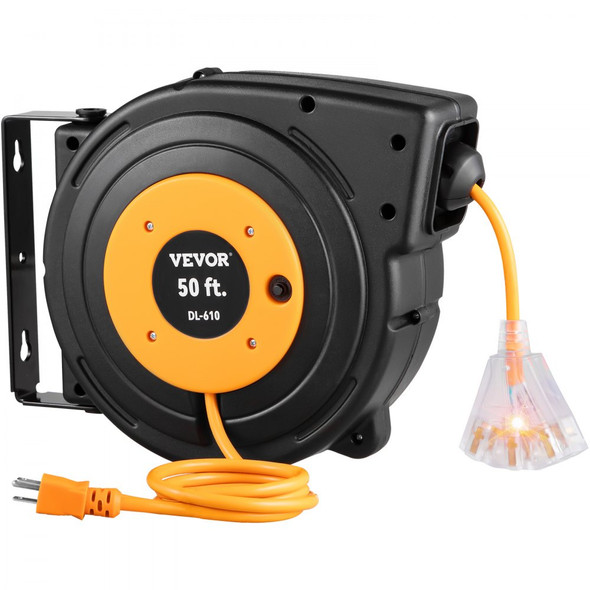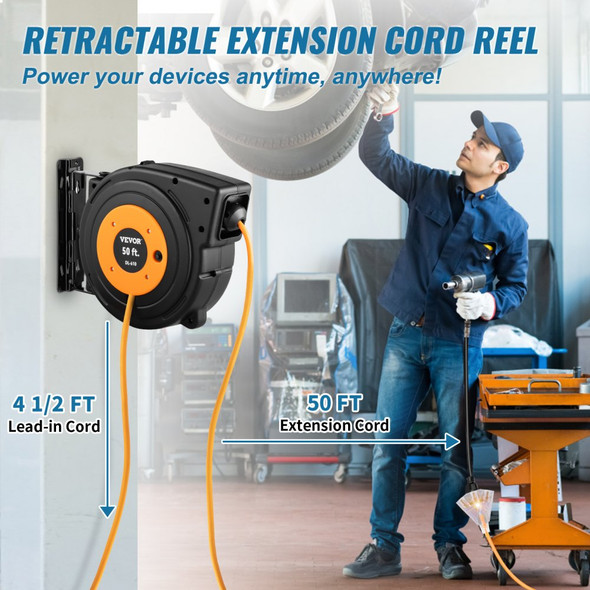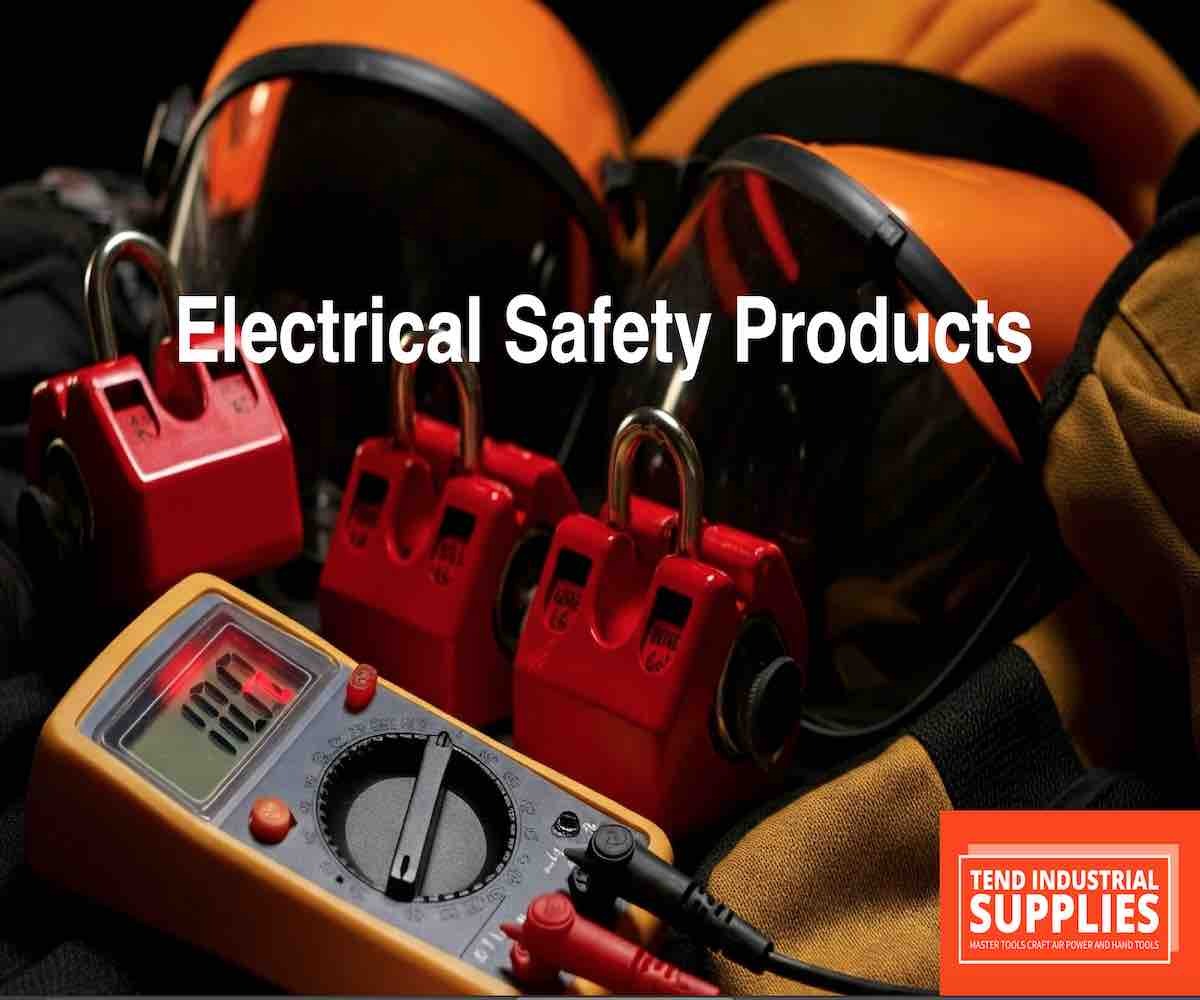Electrical hazards pose a significant risk to workers in various industries, from construction and maintenance to manufacturing and utilities. Electrical shocks, burns, and arc flash incidents can cause serious injury or even death. At Tend Supplies, we're committed to providing the electrical safety equipment and resources you need to protect yourself and your team from these dangers. This Electrical Safety category offers a comprehensive selection of tools, equipment, and protective gear designed to minimize the risks associated with working near or with electricity, ensuring compliance with safety regulations and promoting best practices for electrical safety.
Electricity can be dangerous if not handled properly. The main hazards associated with electrical work include:
Electrical hazards pose a significant risk to workers in various industries, from construction and maintenance to manufacturing and utilities. Electrical shocks, burns, and arc flash incidents can cause serious injury or even death. At Tend Supplies, we're committed to providing the electrical safety equipment and resources you need to protect yourself and your team from these dangers. This Electrical Safety category offers a comprehensive selection of tools, equipment, and protective gear designed to minimize the risks associated with working near or with electricity, ensuring compliance with safety regulations and promoting best practices for electrical safety.
Essential Electrical Safety Equipment
Working safely with electricity requires a combination of specialized tools, protective equipment, and safe work practices.
Insulated Tools:
- Description: Insulated tools are designed to protect workers from electric shock when working on or near energized circuits. They feature non-conductive handles and are tested to withstand specific voltages.
- Types:
- Screwdrivers: Insulated screwdrivers in various sizes and types (flathead, Phillips, Torx).
- Pliers: Insulated pliers, including needle-nose, lineman's, and diagonal cutting pliers.
- Wrenches: Insulated wrenches, including combination wrenches and adjustable wrenches.
- Nut Drivers: Insulated nut drivers in various sizes.
- Key Features to Consider:
- Voltage Rating: Ensure the tools are rated for the voltages you'll be working with. Look for the 1000V rating symbol.
- Standard: Look for tools that meet IEC 60900 or ASTM F1505 standards.
- Material: Durable, non-conductive handle materials.
- Ergonomics: Comfortable grip and ease of use.
- Recommendations:
- Wiha Insulated Tools: Known for their quality and precision.
- Klein Tools Insulated Tools: A trusted brand among electricians.
- Wera Insulated Tools: Offer innovative designs and excellent ergonomics.
Voltage Testers:
- Description: Voltage testers are used to verify the presence or absence of voltage in a circuit before working on it.
- Types:
- Non-Contact Voltage Testers: Detect voltage without making direct contact with the conductor.
- Contact Voltage Testers: Require direct contact with the conductor to measure voltage.
- Multimeters: Versatile tools that can measure voltage, current, resistance, and other electrical parameters.
- Key Features to Consider:
- Voltage Range: Ensure the tester can measure the voltages you'll be working with.
- Safety Rating: Look for testers with a CAT rating (e.g., CAT III, CAT IV) that is appropriate for the environment.
- Audible and Visual Indicators: Clear indication of voltage presence.
- Recommendations:
- Fluke Non-Contact Voltage Testers: A leading brand for electrical testing equipment.
- Klein Tools Non-Contact Voltage Testers: Reliable and affordable options.
- Fluke Multimeters: Known for their accuracy and durability.
Lockout/Tagout (LOTO) Devices:
- Description: LOTO devices are used to isolate energy sources and prevent the unexpected startup of machinery or equipment during maintenance or repair.
- Components:
- Locks: Padlocks used to secure energy isolating devices.
- Tags: Warning tags attached to the locks, providing information about the lockout.
- Hasps: Allow multiple locks to be placed on a single energy isolating device.
- Lockout Devices: Specialized devices for different types of energy sources (e.g., circuit breakers, valves).
- Key Features to Consider:
- Durability: Locks and devices should be made from strong, non-conductive materials.
- Standardization: Use a standardized LOTO system throughout your facility.
- Training: Ensure all workers are properly trained on LOTO procedures.
- Recommendations:
- Master Lock LOTO Products: A leading manufacturer of lockout/tagout devices.
- Brady LOTO Products: Offers a wide range of LOTO solutions.
Arc Flash Protection:
- Description: Arc flash is a serious electrical hazard that can cause severe burns and other injuries. Arc flash protection typically involves flame-resistant (FR) clothing and a face shield.
- Key Features to Consider:
- Arc Rating (ATPV or EBT): Indicates the level of protection the clothing provides against arc flash energy.
- Material: FR-treated cotton, Nomex, or other arc-rated fabrics.
- Compliance: Ensure the clothing meets NFPA 70E standards.
- Recommendations:
- Bulwark FR Clothing: A leading manufacturer of flame-resistant apparel.
- Carhartt FR Clothing: Known for its durability and comfort.
- Honeywell Arc Flash Protection
Safety Signs and Labels:
- Description: Clear and visible safety signs and labels are essential for communicating electrical hazards and promoting safe work practices.
- Types:
- Danger Signs: Indicate immediate hazards that could result in serious injury or death.
- Warning Signs: Indicate potential hazards that could result in injury.
- Caution Signs: Indicate potential hazards that could result in minor injury.
- Safety Instruction Signs: Provide specific safety instructions.
- Key Features to Consider:
- Visibility: Signs should be easily visible and legible.
- Durability: Able to withstand the environment (e.g., weather, chemicals).
- Compliance: Meet ANSI Z535 standards for safety signs.
Electrical Safety Best Practices
In addition to using the proper tools and protective equipment, following these electrical safety best practices is crucial for preventing accidents and injuries:
- De-energize Equipment: Whenever possible, de-energize electrical equipment before working on it. This is the most effective way to eliminate the risk of electric shock.
- Lockout/Tagout (LOTO): Implement and strictly follow lockout/tagout procedures to ensure that equipment remains de-energized during maintenance or repair.
- Test Before You Touch: Always use a voltage tester to verify that a circuit is de-energized before touching any components. Never assume a circuit is dead.
- Use Insulated Tools: When working on or near energized circuits, use tools with non-conductive handles that are rated for the appropriate voltage.
- Wear Appropriate PPE: Wear safety glasses, insulated gloves, and flame-resistant clothing when working with electricity.
- Avoid Contact with Water: Keep electrical equipment and work areas dry. Never work on electrical equipment with wet hands or while standing in water.
- Inspect Equipment Regularly: Inspect tools, cords, and equipment for damage before each use. Do not use damaged equipment.
- Proper Grounding: Ensure that all electrical equipment is properly grounded to prevent electric shock.
- Arc Flash Awareness: Understand the risks of arc flash and take appropriate precautions, including wearing arc-rated clothing and maintaining safe working distances.
- Training and Qualification: Ensure that all personnel working with electricity are properly trained and qualified for the tasks they perform.
- Avoid Overloading Circuits: Do not overload electrical circuits by plugging in too many devices.
- Use GFCI Protection: Use Ground Fault Circuit Interrupters (GFCIs) for outlets in wet or damp locations.
- Maintain Safe Clearances: Maintain appropriate clearances between energized components and other objects or personnel.
- Report Hazards: Report any electrical hazards or unsafe conditions to your supervisor immediately.
4. Frequently Asked Questions (FAQs)
Q1: What is the most important piece of electrical safety equipment?
A1: While all the equipment mentioned is important, voltage testers are arguably the most crucial, as they allow you to verify that a circuit is de-energized before working on it, preventing electric shock.
Q2: What is the difference between insulated tools and regular tools?
A2: Insulated tools have non-conductive handles that are designed and tested to protect against electric shock up to a certain voltage (typically 1000V). Regular tools do not offer this protection.
Q3: What is arc flash, and how can I protect myself from it?
A3: Arc flash is a dangerous electrical explosion that can cause severe burns and other injuries. Protection involves wearing arc-rated clothing, maintaining safe working distances, and following proper procedures for working on or near energized equipment. See our selection of [Arc Flash Protection
Q4: What does a CAT rating on a voltage tester mean?
A4: CAT ratings (CAT I, CAT II, CAT III, CAT IV) indicate the level of overvoltage protection a tester provides. Higher CAT ratings are suitable for higher-energy environments. For most electrical work, a CAT III or CAT IV rated tester is recommended.
Q5: Where can I find OSHA regulations for electrical safety?
A5: OSHA's electrical safety standards are found in 29 CFR 1910 Subpart S. You can access these standards on the OSHA website.
Related Articles:
- Understanding and Preventing Arc Flash Incidents
- Lockout/Tagout Procedures: A Step-by-Step Guide
- Choosing the Right Insulated Tools for Electrical Work
- Electrical Safety in Construction: OSHA Requirements and Best Practices
- Top 5 Electrical Safety Mistakes to Avoid
Conclusion:
Electrical safety is a critical aspect of any workplace where electricity is present. By understanding the hazards, investing in the right safety equipment, and consistently following best practices, you can significantly reduce the risk of electrical accidents and injuries.
Tend Supplies is your trusted source for all your electrical safety needs. We offer a comprehensive selection of high-quality insulated tools, voltage testers, lockout/tagout devices, arc flash protection, safety signs, and more, all designed to keep you and your team safe. We are committed to providing the products, resources, and expertise you need to create a safer work environment.
Ready to enhance your electrical safety program? Explore our Electrical Safety category today and find the equipment you need to work confidently and safely with electricity. Our team of experts is ready to answer your questions and provide personalized recommendations. Contact us at sales@tendsupplies.com for expert guidance and support. Let Tend Supplies be your partner in electrical safety!






